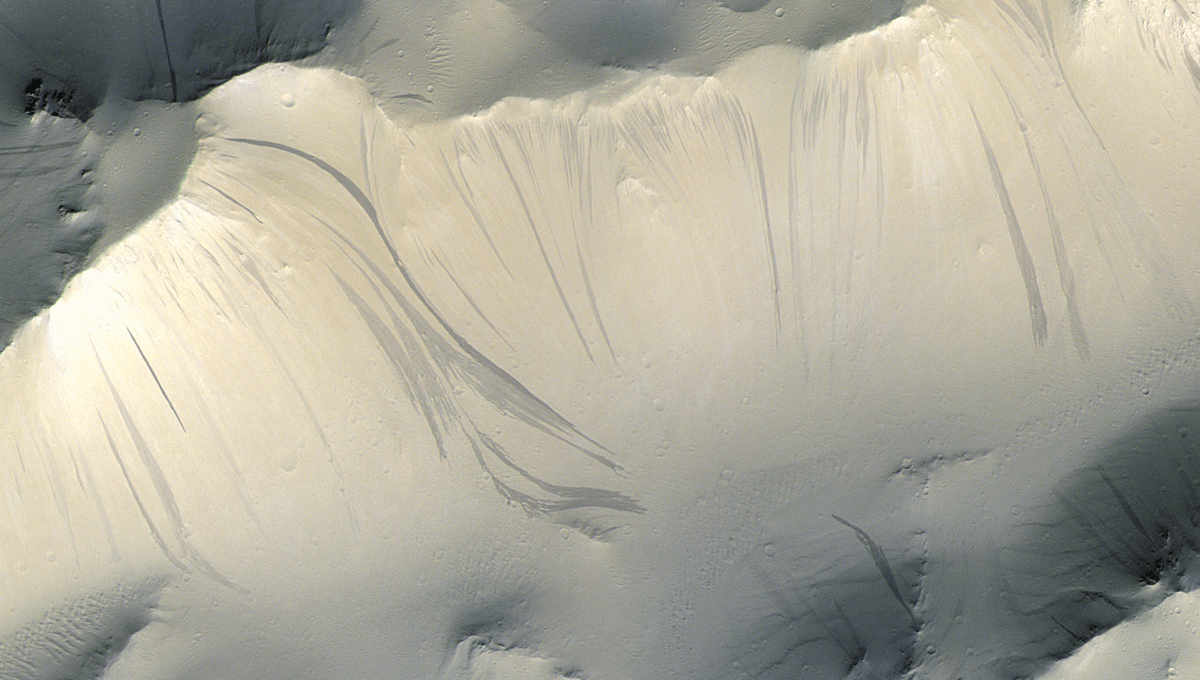
A decade ago, researchers found what was considered the best evidence for the flow of very salty water on Mars: the occasional formation of dark streaks on the sides of dunes. The possibility of water plays a huge role in the possibility of life, so for a decade, scientists have been checking, double-checking, arguing, and counterarguing about these features. The latest word is not what many were hoping for: the streaks don’t seem to be related to water.
To tackle the mystery of the streaks and whether they are evidence of liquid flow, researchers at Brown University and the University of Bern created the largest catalog of streaks on Mars. Using a machine learning algorithm, they classified more than 86,000 high-resolution satellite images to find more than 500,000 across Martian slopes.
“Once we had this global map, we could compare it to databases and catalogs of other things like temperature, wind speed, hydration, rock slide activity and other factors,” co-lead author Valentin Bickel, a researcher at the University of Bern, said in a statement. “Then we could look for correlations over hundreds of thousands of cases to better understand the conditions under which these features form.”
Slope streaks and temporary formations known as recurring slope lineae (RSL) do not seem to be associated with liquid or frost origin. Across the whole half a million examples, they do not seem to form in conjunction with specific orientations, increases in temperature, or humidity. They do actually seem to form in conjunction with above-average wind speed and dust deposition, strongly indicating a dry origin.
“A big focus of Mars research is understanding modern-day processes on Mars — including the possibility of liquid water on the surface,” explained co-lead author Adomas Valantinas, a postdoctoral researcher at Brown. “Our study reviewed these features but found no evidence of water. Our model favors dry formation processes.”
While that is bad news for habitability, the findings suggest that these streaks can play a global role. Even half a million of them can’t change much of the surface of the Red Planet; they actually only modify less than 0.1 percent of Mars. But they shift an amount of dust equivalent to several global dust storms, which is very significant.
The findings might impact where we will look for life in the future for sure.
“That’s the advantage of this big data approach,” Valantinas said. “It helps us to rule out some hypotheses from orbit before we send spacecraft to explore.”
The study is published in Nature Communications.
Source Link: Famous Dark Streaks On Mars Might Not Be What We Were Hoping For